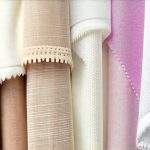Pelvic pain and discomfort can significantly impact quality of life, affecting everything from daily activities to emotional wellbeing. While many factors contribute to pelvic floor dysfunction – including physical trauma, hormonal changes, and repetitive strain – the clothing we wear often gets overlooked. Tight, restrictive garments can exacerbate existing issues or even create new ones by increasing pressure on the pelvic region, hindering natural movement, and impacting circulation. Many conventional fabrics, particularly synthetic materials, lack breathability and can contribute to moisture buildup, potentially leading to irritation and discomfort. Choosing thoughtfully selected clothing made from natural fibers isn’t just about comfort; it’s an active step toward supporting pelvic health and overall wellbeing.
The good news is that prioritizing fabric choice doesn’t mean sacrificing style or functionality. There’s a growing awareness of the link between clothing and physical health, resulting in more options for comfortable and supportive garments made from breathable, natural materials. This article will explore why natural fabrics are beneficial for pelvic ease, delving into specific fiber types and offering practical guidance on making informed choices when building your wardrobe. We’ll also discuss how to identify potentially problematic fabrics and where to find resources for further exploration. Ultimately, the goal is to empower you with knowledge to make conscious decisions that prioritize both comfort and health.
The Benefits of Natural Fibers for Pelvic Health
Natural fibers – those derived from plants or animals – generally offer superior breathability, moisture-wicking properties, and gentle compression compared to synthetic alternatives. This is crucial for pelvic health because restricted airflow and trapped moisture can contribute to irritation, chafing, and even fungal infections in the sensitive pelvic region. Synthetic fabrics like polyester and nylon often lack these inherent qualities, creating a microclimate that’s less friendly to delicate tissues. Breathable fabrics allow air circulation, helping to maintain a healthy temperature and reducing the risk of discomfort. Beyond basic comfort, natural fibers tend to move with the body rather than restricting it, allowing for greater freedom of movement which is essential for supporting pelvic floor function. If you are looking to simplify your routine, consider these daily simplification steps to support pelvic ease.
The impact on pelvic pressure cannot be overstated. Tight clothing, especially around the abdomen, groin, and thighs, can directly increase intra-abdominal pressure. This increased pressure puts strain on the pelvic floor muscles, potentially leading to or exacerbating conditions like pelvic organ prolapse, urinary incontinence, or pelvic pain syndromes. Natural fibers, due to their inherent drape and often looser weaves, are less likely to create this restrictive pressure. Furthermore, many natural fabrics have a degree of elasticity that allows them to stretch and accommodate movement without constricting the body. This is particularly important for individuals who experience fluctuations in weight or engage in physical activity.
Consider also the sensory impact. Individuals with chronic pain conditions often experience heightened sensitivity to textures and materials. Synthetic fabrics can sometimes feel scratchy, irritating, or overly stimulating on the skin, contributing to discomfort and anxiety. Natural fibers like organic cotton, silk, and bamboo are generally softer and gentler against the skin, promoting a sense of calm and wellbeing. This is not merely about physical comfort; it’s about reducing overall sensory overload and creating a more supportive environment for the nervous system.
Understanding Fiber Options: Cotton, Linen & Hemp
Cotton is perhaps the most widely recognized natural fiber, prized for its softness, affordability, and breathability. However, organic cotton is preferable. Conventional cotton farming utilizes significant amounts of pesticides and herbicides which can leave residue on the fabric and potentially cause skin irritation. Organic cotton is grown without these harmful chemicals, making it a safer choice, particularly for sensitive areas. Linen, derived from flax plants, offers excellent breathability and moisture-wicking properties, even surpassing cotton in some respects. It’s also incredibly durable and becomes softer with each wash. Linen’s slightly textured surface can be beneficial for those who prefer a less clingy fabric.
Hemp is another increasingly popular option that boasts exceptional strength, durability, and sustainability. It requires significantly less water than cotton to grow and naturally resists pests, reducing the need for pesticides. Hemp fabrics are breathable, moisture-wicking, and have inherent antibacterial properties. While hemp can sometimes feel slightly rough initially, it softens considerably with use and washing. Look for blends of hemp with other natural fibers like organic cotton or silk to enhance its softness and drape. It’s important to note that the quality of these fibers varies significantly depending on processing methods – opting for ethically sourced and sustainably produced options is always best.
Silk & Wool: Less Conventional, Equally Beneficial Choices
Silk, often associated with luxury, offers surprising benefits for pelvic health. It’s incredibly lightweight, breathable, and has a naturally cooling effect which can be helpful for managing temperature fluctuations. The smooth texture of silk minimizes friction, reducing the risk of chafing and irritation. While delicate, high-quality silk is surprisingly durable when properly cared for. Wool, specifically merino wool, deserves consideration too, despite its association with itchiness. Modern merino wool is incredibly fine and soft, unlike traditional coarser wools.
Merino wool is a fantastic temperature regulator – keeping you warm in cold weather and cool in hot weather – while also being highly breathable and moisture-wicking. It’s naturally antibacterial and odor resistant, making it an excellent choice for underwear or activewear. The natural crimp of merino fibers provides gentle compression without restricting movement. Like other natural fibers, sourcing matters; look for ethically produced merino wool from farms that prioritize animal welfare. The key takeaway is not to dismiss these less conventional options without exploring their potential benefits – especially if you’re seeking fabrics with unique properties and performance characteristics.
Identifying & Avoiding Problematic Fabrics
Synthetic fabrics like polyester, nylon, spandex (lycra), and acrylic are generally best avoided or minimized, particularly in garments worn close to the pelvic region. These materials lack breathability, trap moisture, and can contribute to irritation and chafing. While spandex is often blended with natural fibers to provide stretch, excessive amounts should be avoided as it restricts airflow and increases pressure. Even seemingly innocuous blends can pose problems if the synthetic content is high – aim for garments with a majority of natural fibers.
Pay attention to fabric finishes too. Some fabrics are treated with chemicals to enhance their performance (e.g., wrinkle resistance or water repellency). These chemical treatments can potentially irritate sensitive skin and should be avoided, particularly if you have allergies or sensitivities. Always check the care label for fiber content and any warnings regarding chemical treatments. A simple test is to hold the fabric up to the light – a densely woven synthetic fabric will often appear less porous than a natural fiber counterpart. Finally, prioritize loose-fitting garments over tight ones, regardless of the fabric type. This reduces pressure on the pelvic region and allows for greater freedom of movement. To further support overall wellbeing, consider incorporating stress reduction techniques into your daily routine.
Ultimately, choosing natural fabrics for pelvic ease is about prioritizing comfort, breathability, and gentle support. It’s a small change that can have a significant impact on overall wellbeing and quality of life. You might also find benefits from exploring specific clothing tips designed for pelvic comfort.





















